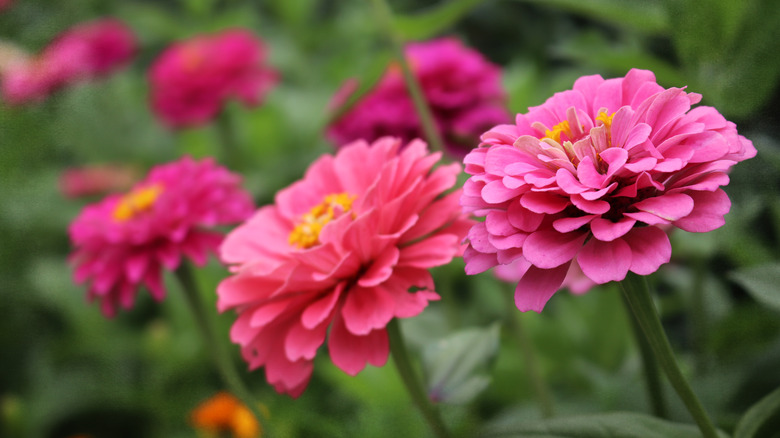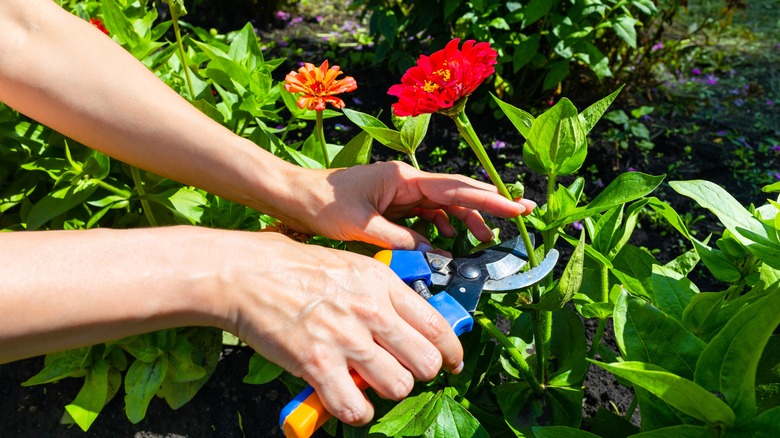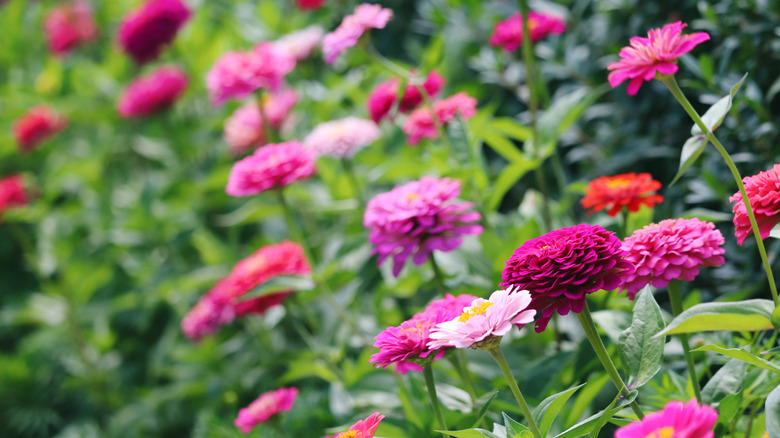How To Grow Zinnia Flowers From Cuttings To Fill Your Garden With More Fresh Blooms
Zinnias, with their brightly colored petals and perky, upright growth are the epitome of cheerfulness. Originating in southern North America and South America, these flowers thrive in warm climates. As an annual from the astereacae family, the zinnia comes in an array of shades from a simple white to orange, purple, pink, and red. With as many colors as the zinnia offers, it's easy to understand why you would want more of them in your yard. The good news is you can blanket your garden in a never-ending rainbow of zinnias by propagating the flower from cuttings.
While you can harvest zinnia seeds for an endless supply of beautiful flowers, propagating is much more efficient. With zinnia cuttings, the stems are separated from a parent plant and transplanted after producing new roots. The stem cutting becomes an independently grown plant. With some gardening shears, scissors, a jar of water, and some soil, you'll have an abundance of propagated zinnias in no time.
How to propagate your zinnias from cuttings
To begin propagating your zinnias from stem cuttings, use a pair of sharp garden shears — one of the most essential gardening tools — to cut your zinnia of choice 4 to 6 inches off the top of the plant and below a node. Ideally, you'll want the stem to not have any flowers or buds on it to allow the plant to use its energy on re-rooting itself. If your chosen stem does have flowers or buds, you can clip these off. After cutting the stem, remove the leaves from the lower half of the stem. Do this to decrease the amount of water loss experienced by the stem. To reduce water loss even further, use scissors to cut any remaining large leaves in half.
When the leaves are removed, place the cutting in a jar of water. Add just enough water to cover where the leaves were removed. Place the cutting's jar in bright light. In a few weeks, roots will protrude from the stem. This is a telltale sign that the propagation technique was successful and you can now place your newly rooted zinnia stem in soil for further growth.
Ongoing care for your zinnia cuttings
After your zinnia cutting is established, provide ongoing care to ensure its survival for seasons to come. At this point, you can follow typical care requirements for these low-maintenance blooms. Part of their needs include planting them in well-drained soil in full sun, for at least six hours a day. Plant them next to cilantro and your zinnias will absolutely thrive. Ensure that the cuttings are spaced apart to allow for proper air circulation between each flower. This should be done because the stems of the zinnias are hairy and susceptible to growing powdery mildew.
Water the flowers in the morning or only at the base of the plant to prevent mildew growth. Though they are drought tolerant, keep the flowers watered regularly to help them bloom at their boldest and brightest. Depending on the variety of zinnia you propagated, you can expect your zinnias to grow anywhere from 8 inches to 4 feet tall. They will bloom in spring, summer, and fall for a continuous burst of color throughout the year.


